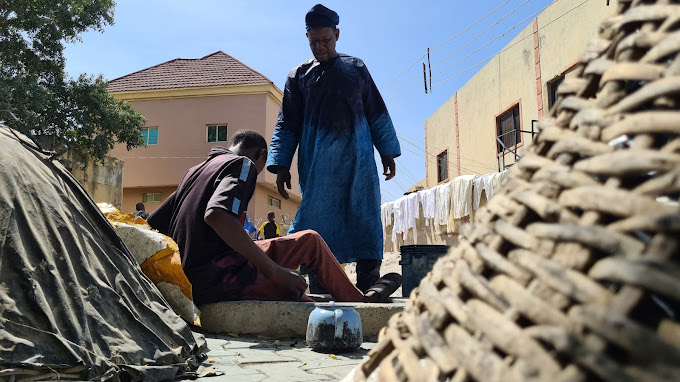The Kano Dye Pits, located in the ancient city of Kano, Nigeria, represent a rich tapestry of history and tradition that has endured for over five centuries. Established in 1498, the Kofar Mata Dye Pits are among the oldest in Africa and are a symbol of Kano’s vibrant cultural heritage.
Despite the passage of time, the traditional methods used in these pits have remained largely unchanged, making them a living museum of Nigeria’s textile history.
READ ALSO: NAFDAC warns against reddening palm oil with Azo dye

A Journey Through Time
The Kofar Mata Dye Pits were originally established to produce vibrant indigo-dyed fabrics that were highly sought after across West Africa and beyond. These fabrics were not only prized for their striking colors but also for the intricate designs that were painstakingly created by local artisans. The dyeing process involves several steps, starting with the fermentation of natural indigo plants in large, circular pits, followed by the meticulous immersion of fabrics to achieve the desired hues. The entire process can take up to six weeks, resulting in deep, rich colors that are unmatched by modern dyeing techniques.
A Dying Legacy
Once a bustling hub of economic activity, the Kano Dye Pits have seen a significant decline in recent years. Where there were once over 200 active pits, today only a handful remain operational. The reasons for this decline are manifold, including the impact of insecurity in Northern Nigeria, competition from cheaper, mass-produced fabrics, and a lack of support from local authorities. The arrival of synthetic dyes and modern fabrics has further eroded the market for traditionally dyed textiles, making it difficult for the few remaining artisans to sustain their craft.
Despite these challenges, the dye pits continue to attract tourists and cultural enthusiasts from around the world. Visitors are often captivated by the sight of artisans at work, immersing fabrics in the indigo dye, and the rich history that these pits represent. However, the future of this ancient craft remains uncertain as the younger generation shows less interest in maintaining the tradition, opting instead for more modern professions.
Efforts to Preserve the Tradition
Recognizing the cultural and historical significance of the Kofar Mata Dye Pits, there have been calls for greater efforts to preserve this unique heritage. Some local leaders and historians advocate for government intervention to revitalize the pits and promote them as a major tourist attraction. There are also proposals to modernize the facilities while preserving the traditional methods, thus ensuring that the legacy of Kano’s dye pits can be passed down to future generations.


